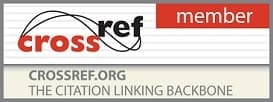- Printed Journal
- Indexed Journal
- Refereed Journal
- Peer Reviewed Journal
P-ISSN: 2394-1685 | E-ISSN: 2394-1693 | CODEN: IJPEJB
Impact Factor (RJIF): 5.38
2018, Vol. 5, Issue 5, Part A
Effects of smoking on heart rate at rest and during submaximal exercise, heart rate recovery and blood pressure in young adults
Author(s): Prem Kumar V, Rajan Balakrishnan and Charuashini AP Krishna Rao
Abstract:
Background: Smoking is estimated to cause 10% of cardiovascular disease (CVD) and is the second leading cause of CVD after high blood pressure. The arteries that supply blood to the heart become severely narrowed artery in coronary disease. Adrenaline produced when the nicotine in cigarettes stimulates body, which means heart beat faster and raises blood pressure, making heart to work harder.
Objective: To investigate the differences of cardiac function in smokers and non-smokers.
Design: Observational study,
Method: A total of 40 (20 smokers and 20 non-smokers) samples are choose based on purposive sampling method with the age range of 18 to 24 years old male and healthy weight Body Mass Index (BMI). Subjects with low physical activity profile are screened with International Physical Activity Questionnaire (IPAQ-short). Before the patient is asked to run on treadmill until sub maximal effort, heart rate and blood pressure is measured after 10 minutes of rest. During treadmill running, heart rate will be measured each minute using pulseoximeter. After the patient underwent recovery period for 5 minutes, heart rate and blood pressure measured again.
Results: In the present study, smoking was found to effect resting heart rate (79.45 ± 2.78 and 73.40 ± 2.30) in young male smokers compares with non-smokers. Resting systolic blood pressure shows a significant difference between smokers and non-smokers (129.10 ± 4.17 and 120.25 ± 3.18) and resting diastolic blood pressure also found to have statistical significant different between smokers and non-smokers (85.50 ± 3.32 and 77.65 ± 3.00). Our study shows that smokers had found no significant difference in heart rate during sub maximal exercise compared with non-smokers (119.40 ± 1.14 and 119.35 ± 1.09) and attenuated heart rate decline during heart rate recovery (84.40 ± 2.95 and 76.10 ± 3.49) in smokers and non-smokers. Recovery systole (155.65 ± 3.33 and 144.25 ± 4.20) and diastole (107.45 ± 4.62 and 104.05 ± 5.23) blood pressure is also having slower decline in smokers compared with non-smokers.
Conclusion: This study proves that resting heart rate in smokers is higher than non-smokers. Systolic and diastolic blood pressure also appears higher value in smokers compares with non-smokers. Heart rate during sub maximal workload shows no statistically significant difference between smokers and non-smokers. Recovery heart rate in smokers declines attenuated when compares with non-smokers. Systolic and diastolic blood pressure shows higher value in smokers than in non-smokers.
Pages: 06-12 | 1485 Views 334 Downloads
Download Full Article: Click Here

How to cite this article:
Prem Kumar V, Rajan Balakrishnan, Charuashini AP Krishna Rao. Effects of smoking on heart rate at rest and during submaximal exercise, heart rate recovery and blood pressure in young adults. Int J Phys Educ Sports Health 2018;5(5):06-12.








 Research Journals
Research Journals